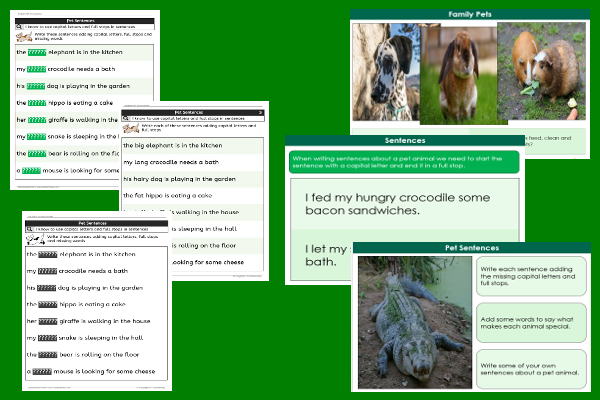Pet Capitals

This English teaching pack for Key Stage One gets the children to practise using capital letters correctly in example sentences to describe some of the unusual animals that could be kept as a pet by a family.
The class can explain and model how to add powerful adjectives to describe the nouns in each of the different sentences about pet animals to describe their appearance, movements and sounds.
Download this teaching pack including classroom activities and an interactive presentation to practise using capital letters correctly in example sentences to describe some of the unusual animals that could be kept as a pet by a family
Activities in this teaching pack include differentiated sentences to select add powerful adjectives to describe some of the different animals that could be kept as a pet by a family in matching sentences with the correct punctuation for capital letters and full stops.
The interactive presentation gets the children to explore how to use capital letters in sentences to describe different animals that could be kept as a pet by a family.
This lesson is part of an English scheme of work to get the children to identify and record how to punctuate sentences correctly using capital letters to describe some different types of animals. There are teaching activities for shared learning, differentiated worksheets to support independent learning and interactive presentations to introduce concepts and key skills.
-

Sea Collage
Combine and shape a selection of different natural and art materials to produce artwork reflecting ideas and themes about the sea
-

Harvest
Explore and record how the autumn harvest is celebrated and marked in different communities around the world
-

Weather Database
Explore and record how to use computer databases to store, organise and interrogate data and information about what is happening in the weather
-

Seaside Sculpture
Select and use a range of different natural materials found on a beach to produce some model sculptures on the theme of the seaside
